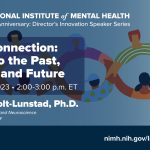[ad_1]

Source: Shutterstock/Tirachard Kumtanom
This post was co-authored by Rahil Briggs, Psy.D., and Sarah MacLaughlin, LSW.
Preschool expulsion and the routine exclusion of young children from early learning settings is an ongoing problem in the United States. In 2021, approximately 17,000 preschool students were suspended or expelled, and half of them were Black boys—even though, as a demographic, they only represent about 20 percent of children in these programs (Davis et al., 2020). When children are removed from their schools and childcare centers for exhibiting challenging behavior so early in life, it can have a lasting impact on them and their parents (Novak, 2023).
A 2016 study that used eye-tracking technology asked early childhood teachers to assess which children were demonstrating disruptive behavior and found that adults were looking at boys more often than girls—and Black boys most often—during the experiment (Gilliam et al., 2016). Gilliam noted, “When you’re looking for bad behavior, eventually you’ll find it. And you’re also more likely to miss problematic behavior that’s coming from places that you don’t expect” (Novak, 2023). It is vital for teachers and childcare providers to be aware of their beliefs and biases because a child’s earliest caregivers are so influential: The more these grown-ups reflect, the better they will be able to supportively respond to challenging situations that regularly present in infant and toddler settings (MacLaughlin, 2017).
Implicit bias is the term used for the unconscious judgments and attitudes one holds about certain types or groups of people. Unlike explicit bias, in which a person is aware of their prejudice, implicit bias often flies dangerously under the radar. There are many ramifications of implicit bias in preschool classrooms, and it is a likely contributor to the high rates of expulsion for Black boys. An Infant and Early Childhood Mental Health Consultation (IECMHC) framework may be a critical part of the solution, as it brings a “consultive alliance” that can help support teachers and childcare providers to bring awareness to blind spots and implicit biases (Davis et al., 2020).
1. Cultivate reflective capacity among staff. Asking reflective questions of teachers allows them to “wonder” about classroom circumstances and their own thoughts and reactions, and potentially see the situation—and the bigger picture—more clearly and with increased empathy (Davis et al., 2020).
2. Create an environment that makes space for struggle and emotions. Early childhood educators may be perpetually burnt out. Because their jobs are intense and stressful, it is vital that they have space to “vent” their emotions and frustrations to a nonjudgmental party who will “just” listen (Davis et al., 2020).
3. Consider the issues of race and gender. It is important for teachers to reflect on implicit biases around both race and gender as they impact interactions with young children. Further, when these topics are explored, teachers may be better able to engage in conversations about how cultural perspectives impact behavior and parental expectations (Davis et al., 2020).
4. Improve cultural awareness and humility. Building on the foundation of exploring bias and considering the constructs of race and gender, the additional work of digging into cultural contexts can bridge differences, bolster understanding, and improve cultural humility. Researchers have found that increased cultural awareness greatly impacted teachers’ understanding and attributions of child behavior (Davis et al., 2020).
5. Explore contexts and perspectives. When teachers increase their reflective ability and counter unconscious biases, they may be open to a wider scope of understanding of what is driving child behavior (Davis et al., 2020). A multifaceted perspective allows for more empathy for the child, a deeper understanding of contextual factors, and a more accurate and nuanced narrative that explains the “why” of behavior, such as trauma, neurodiversity, parenting differences, and cultural expectations (Davis et al., 2020).
The parallel process of teachers and childcare providers receiving support—through IECMHC, reflective supervision, or other means—lets them better provide unbiased support to all children and their families. A culture of curiosity, reflection, and cultural humility can reduce bias and the unnecessary expulsion of preschoolers from their educational settings, a practice that leads to poor outcomes for young children, their families, and the larger community.
[ad_2]
Source link










